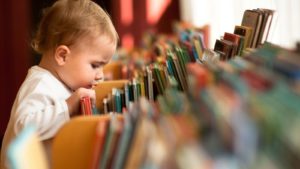No Such Thing as Cheating
Illustrations exist in children’s books for many reasons. They are fun, they attract the attention of young eyes, and they show us what the characters look like. However, there’s more to them than meets the eye. Being able to read pictures is a very useful skill, both when learning to read and for general life!
Concerns about “cheating” usually come from a worry that if children look at the images rather than the words on a page to figure out what is happening, they won’t learn to read.
Not only is this not true, but covering up the images can actually make it harder for your child to read and make the experience of reading together less positive. That’s the opposite of what we want!
Picture book illustrations are there for an important reason: to give meaning to the words your child is reading. Rather than covering up the images, why not teach your children to “read the pictures” in their stories?

Reading the Pictures
Knowing how to read pictures helps young children transition to becoming independent readers. It helps them learn to:
- follow the storyline
- identify characters, objects, actions, and other elements of the story
- connect written words with visual cues
- decode and identify written words
- recognize the emotions and the feelings of the characters
- predict upcoming events in the story
- connect past events in the story to current ones
- develop their own creativity
- real emotions (their own and those of others)
- consequences for actions
- real world objects
When children have a good grasp on these skills, they are more ready to tackle difficult books with more difficult language and fewer images.
Picture Books to Practice With
Our favourite tools to practice learning to read pictures are books with no words at all! Wordless books tell stories entirely through pictures. This makes them a great learning tool and a great discussion tool to share with kids of all ages.
When reading a wordless book, you can ask your child:
- What do you think is happening?
- What is the character doing?
- What is the character feeling?
- What do you think the character might be saying?
- What do you think might happen next?
Here are some of our favourite wordless books to practice with!
Want to Learn More?
Check out the Kindergarten Connection or Reading Rockets for some great articles on teaching children to read pictures. Or, hit up our blog for more #literacytips and #staffpicks. We’ve got you covered!

First Day of School
If you have a child getting ready for their first day of school, check out our recommended reading list and

#Literacytip: Library Cards for Kids
Did you know that children of any age can have their very own library card with the TNRL. What better way to encourage young children to take charge of their reading than to give them the tools?

#Staffpick: Summer Wrap-up Reads for 0-5
Summertime is coming to an end! Here are some summer wrap up and back to school reads for the whole family to enjoy.
